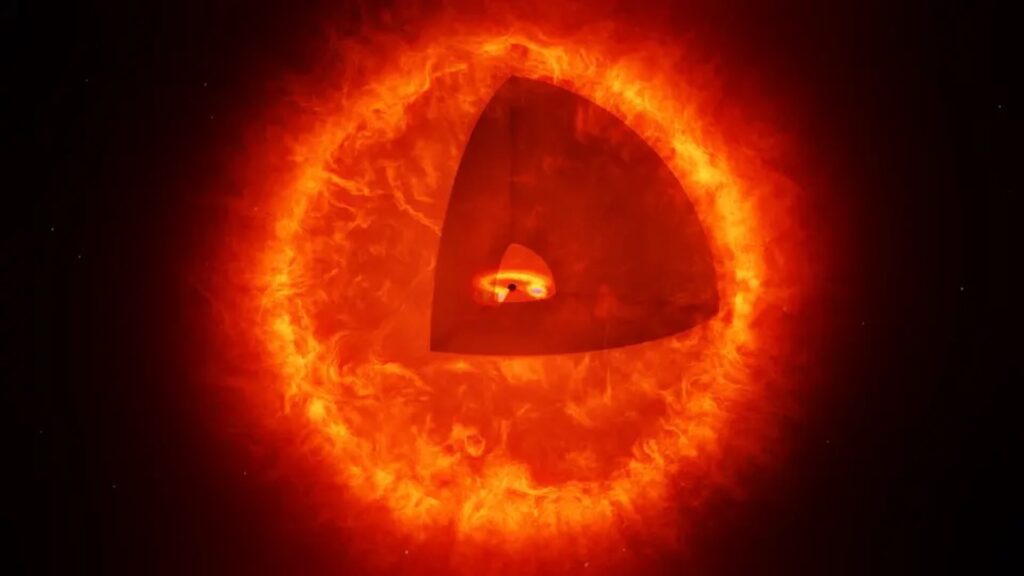Astronomers have made a significant discovery regarding the “little red dot,” first observed by the James Webb Space Telescope (JWST) in 2022. This object, dubbed “The Cliff,” is proposed to represent a new class of cosmic objects termed “black hole stars.” These hypothetical stars consist of rapidly feeding black holes that illuminate surrounding gas, making them appear star-like.
Previously, the red dot’s identity had been debated, with theories ranging from large early galaxies to active supermassive black holes. However, new research led by Anna Degraf and her team indicates that this object might showcase a distinct brightness increase known as a Balmer Break, which cannot be explained by traditional models of galaxies or active galactic nuclei.
The researchers suggest that “black hole stars” are massive black holes surrounded by dense gas, emitting significant light as they accumulate material. Unlike normal stars, which rely on nuclear fusion, these entities behave differently, being enveloped in thick gas. While their findings are intriguing, they emphasize the need for further observations to better understand these objects’ nature and evolutionary paths.
The research is pivotal as it could explain the formation of supermassive black holes in the early universe. Ultimately, the question remains whether the little red dot represents an exotic type of black hole star, a growth phase of larger black holes, or a transitional stage in galaxy development.
Source link


